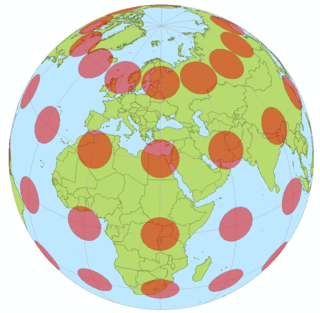Reification may refer to:

A model is an informative representation of an object, person, or system. The term originally denoted the plans of a building in late 16th-century English, and derived via French and Italian ultimately from Latin modulus, a measure.
Representation may refer to:
MR, Mr, mr, or mR may refer to:

The map–territory relation is the relationship between an object and a representation of that object, as in the relation between a geographical territory and a map of it. Mistaking the map for the territory is a logical fallacy that occurs when someone confuses the semantics of a term with what it represents. Polish-American scientist and philosopher Alfred Korzybski remarked that "the map is not the territory" and that "the word is not the thing", encapsulating his view that an abstraction derived from something, or a reaction to it, is not the thing itself. Korzybski held that many people do confuse maps with territories, that is, confuse conceptual models of reality with reality itself. These ideas are crucial to general semantics, a system Korzybski originated.
Fundamental may refer to:

A mental model is an internal representation of external reality: that is, a way of representing reality within one's mind. Such models are hypothesized to play a major role in cognition, reasoning and decision-making. The term for this concept was coined in 1943 by Kenneth Craik, who suggested that the mind constructs "small-scale models" of reality that it uses to anticipate events. Mental models can help shape behaviour, including approaches to solving problems and performing tasks.
The term conceptual model refers to any model that is formed after a conceptualization or generalization process. Conceptual models are often abstractions of things in the real world, whether physical or social. Semantic studies are relevant to various stages of concept formation. Semantics is fundamentally a study of concepts, the meaning that thinking beings give to various elements of their experience.
A mental representation, in philosophy of mind, cognitive psychology, neuroscience, and cognitive science, is a hypothetical internal cognitive symbol that represents external reality or its abstractions.
Representational systems is a postulated model from neuro-linguistic programming, a collection of models and methods regarding how the human mind processes and stores information. The central idea of this model is that experience is represented in the mind in sensorial terms, i.e. in terms of the putative five senses, qualia.
Pluralism in general denotes a diversity of views or stands, rather than a single approach or method.
Dualism most commonly refers to:
A model is an informative representation of an object, person or system, and serves as a substitute for the original. For example:

Computer-generated imagery (CGI) is a specific-technology or application of computer graphics for creating or improving images in art, printed media, simulators, videos and video games. These images are either static or dynamic. CGI both refers to 2D computer graphics and 3D computer graphics with the purpose of designing characters, virtual worlds, or scenes and special effects. The application of CGI for creating/improving animations is called computer animation, or CGI animation.
Internal model may refer to:
Internal representation may refer to:
The attention schema theory (AST) of consciousness is a neuroscientific and evolutionary theory of consciousness which was developed by neuroscientist Michael Graziano at Princeton University. It proposes that brains construct subjective awareness as a schematic model of the process of attention. The theory is a materialist theory of consciousness. It shares similarities with the illusionist ideas of philosophers like Daniel Dennett, Patricia Churchland, and Keith Frankish.
This page is based on this
Wikipedia article Text is available under the
CC BY-SA 4.0 license; additional terms may apply.
Images, videos and audio are available under their respective licenses.



